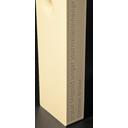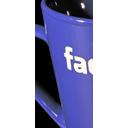Sandblasting ceramics
Be it for decorative or technical purposes, sandblasting is an easy way to process and shape brittle and hard materials. It allows you to come up with many new creative applications. Ceramic tiles can be processed easily through sandblasting. Cutouts, or holes, it is easy to obtain any shape. Matte surfaces to increase slip-resistance, engravings for subsequent inscriptions as well as embellishments are easy to produce. The cleaning for historical purposes completes our range of offerings. High-quality processing of various forms leaves room for the designer's creativity.
Application and technique
Examples of materials that can be blasted
- Bricks
- Glazed ceramics
- Ceramic tiles
- Porcelain
Examples of application
- Tableware (letterings)
- Washstands
- Vases
- Cups
- Washbasin cutouts
- Tile holes and cutouts
- Anti-slip protection on steps
- Cleaning of diamond-tipped tools
- Cleaning (flower stands, roof and floor tiles etc.)
Sandblasting material
- Corundum
Technical information and processing details
By using sandblasting, ceramic surfaces can be labeled, engraved, and subsequently coated with bronze, gold, silver, or colored varnish. Bricks and fibre cement can be cleaned by blasting – even severe soiling disappears. Shiny surfaces can be matted and made more slip-resistant. Just like with glass, the same goes for letterings and logos. Technical blasting, e.g. hole blasting for installation cutouts etc.





